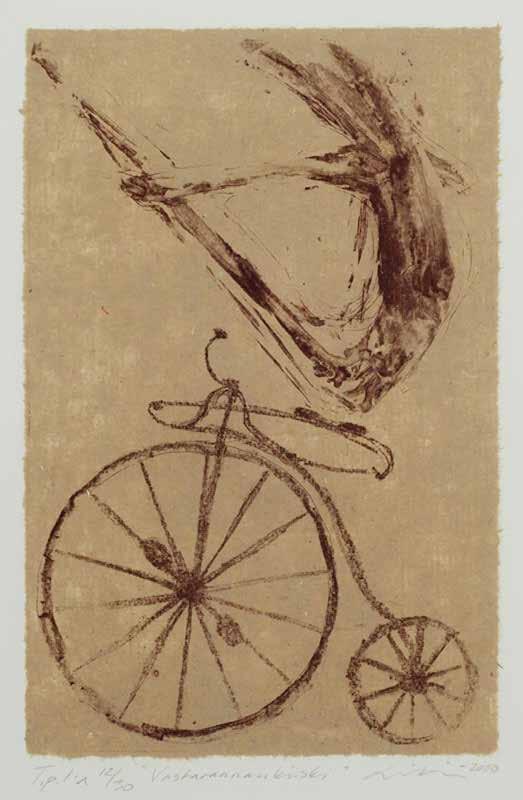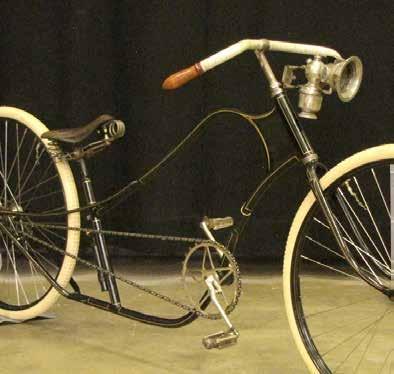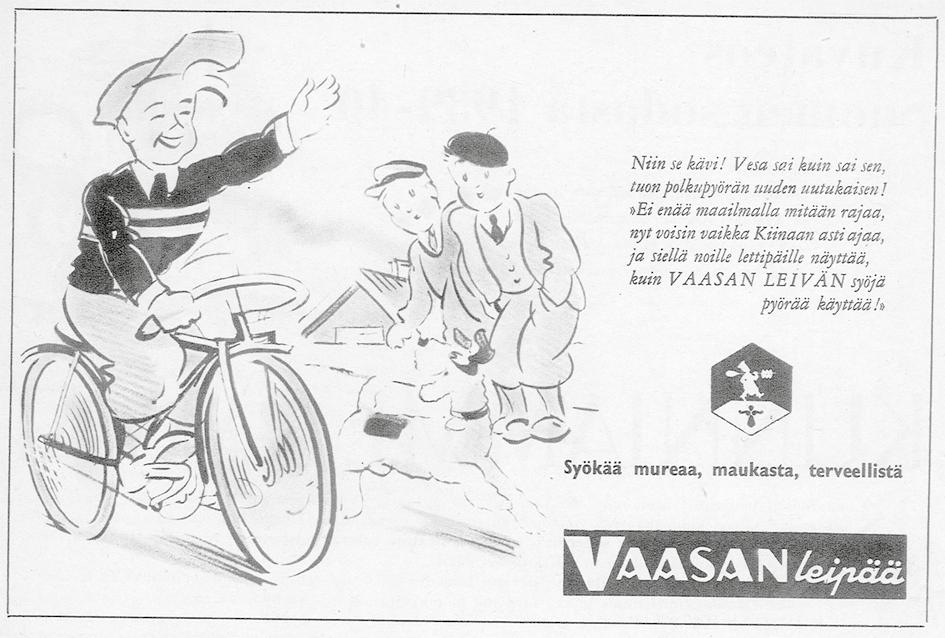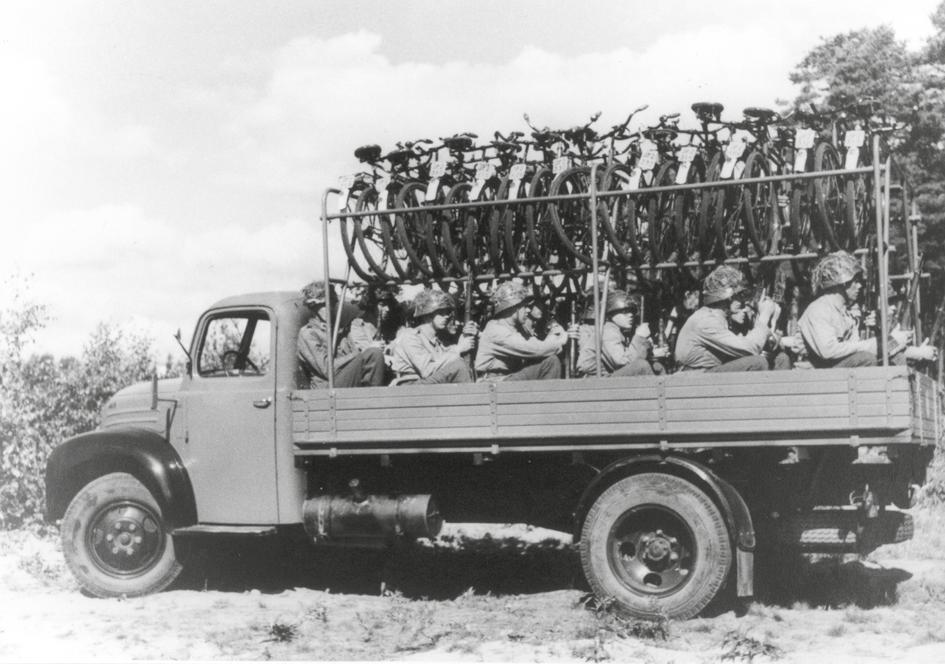Summaries Translation Tiina Alestalo BICYCLE AS THE SPEARHEAD OF FINNISH MILITARY After gaining independence from Russia, Finland restored in 1918 military service, which had not been effective for 14 years. Martti Piltz, expert in the Mobilia Museum, explains on pp 8 - 13 how Finland turned to Germany, France, and England for a new model on military service. Germany, where bicycle companies had been set up after 1906, served as an influence for the Finnish bicycle troops. Consequently in 1920 the Finnish army had a bicycle company in the Jäger Brigade and two bicycle squadrons in the Cavalry Regiment. A thousand bicycles had been acquired for this purpose from abroad. Bicycles, for their mobility, were considered comparable with the cavalry, and the bicycle troops carried a cavalry rifle. In the 1920’s, the aim of the armed forces was to secure peace, which according to the war doctrine required firepower and mobility. The bicycle was agile and riding a common skill, so training was very straightforward. Yet a military threat was lurking in the south-east, in the direction of the Karelian Isthmus, where also the bicycle troops were directed: in Terijoki, Raivola, and Mikkeli. Few soldiers were provided with bicycles in the beginning, but as early as in 1924 each man in the troops had a bicycle at his disposal. Finland’s target was to set up six bicycle battalions whose trained crew would be constantly ready for battle. In 1932 the share of bicycle troops was 4 per cent of the wartime military forces (cf. infantry 52 % and artillery 12 %). A simple, sturdy basic model supplemented for military use was chosen as the war bicycle by the Finnish army. The bicycles continued to be procured from Germany who boasted a standard war bicycle, the Truppenfahrrad. In 1934 Finland had 6300 military bicycles. From then on started also the procurement of Finnish bicycles, mostly models of the Pyrkijä brand.
In the Winter War, during 1939 - 1940, 27 regiments with a bicycle division were employed. Battalions had a bicycle troop. Additionally, four specific bicycle battalions and a cavalry brigade were raised. The navy had eight bicycle companies. Supplying the troops in the Winter War required about 17 000 bicycles, while there were some 7300 bicycles in actual use. The share of stock versus bicycles needed at the front was approximately the same as for skis. A reservist was required to bring his own skis but no bicycle. The need for bicycles was filled by new procurements and by redeeming from new recruits. In sum, there were 600 000 bicycles in Finland before the Winter War out of which 10 000 were redeemed to military use. With regard to infantry and cavalry, bicycle troops proceeded with double or even triple speed, comparable to trucks used at the time. Experiences from the bicycle troops in the Winter War were positive though bicycles were used to a lesser degree because of snow. In the Continuation War, during 1941 - 1944, 16 divisions were raised, each with a light infantry brigade. In three companies the bicycle had replaced horses. The number of bicycles in the divisions grew from about one thousand to 2746, and the number of motor vehicles from 120 to 470. When the horses of the service corps were replaced by cars, the armed forces started moving faster, too. The troops proved their ability in the summer of 1941 when the frontline proceeded about 180 kilometers in two weeks on bicycles. Brisk young men who had demonstrated their military skill were chosen to bicycle troops on a voluntary basis, and they were exceptionally well armed. The role of these commando units was significant in the swift battles fought at the end of the war. The need for military bicycles had increased to about 70 000 units, and they were now procured from the homeland and from Sweden. The army had a priority and its orders consumed the whole capacity of homeland factories. The production target of some 80 000 bicycles a year remained a far cry because of materials shorta-
ge. A crucial scarce commodity were bicycle tires. They were manufactured from recycled rubber, while genuine raw materials were used for truck tires. Bicycle procurement was peanuts in comparison with the rest of the war industry. What’s more, after the war 40 000 bicycles, most of them used, were sold to civilians from army storage. In the 1950’s bicycles were considered an old-fashioned but inexpensive means of adding mobility. The infantry company had only nine bicycles. The infantry could be given bicycles for transfer marches, but thanks to their off-road movability, the army didn’t want to give up horses. Again in the 1970’s, each infantry man had a bicycle. Because of the expansion of military threats, bicycles were abolished from wartime military use. Before the full termination of procurements, the bicycle brand changed from Tunturi to Helkama’s Jääkäri (Jäger). The industrial repair of bicycles in the transportation depot ended in 1991. In the garrisons there are still plenty of bicycles; their purpose is to speed up marches to action areas. Present-day fighters are so well taken care of that in 2010 conscripts were provided with bicycle helmets. Risto Alanko continues with his series on the international development of military bicycles. On pages 18 - 23 he engages in the use of bicycles in the Boer War.
Smartly thought
Risto Lehto continues his series of cycling jokes on p 24. Jukka and Pasi had agreed to meet at the Vilkkilä crossroads to go and see girls. Jukka arrived at the meeting spot late, his nose bloody, the elbow broken out with an asphalt-rash, and a trouser-leg torn. He explained, somewhat stumbling, the reason for his appearance: “I stopped by in the bottle-o. Was about to hang my liquor bag on the handlebar, but then I thought: were I to fall, the bottle might get broken. So I poured the bottle down my throat. And I sure did the right thing, because on may way here I fell four times.” Pikajalka 24
6









